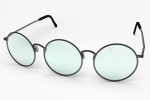GUEST BLOGGER: Mary Anne Mather, Using Data Senior Facilitator & Social Media Liaison on Twitter & FaceBook
All too often state test results may be the only source consulted when targeting specific areas for improvement. However, decisions about instructional changes that reflect only this single data source, might lead to errors in your decision-making.
If you want your data to lead you toward making meaningful changes, an important principle to follow, is triangulation.  Triangulation means using three independent data sources to examine apparent issues or problems. You might ask, “Why bother with the extra work of triangulating?” Consider this analogy:
Triangulation means using three independent data sources to examine apparent issues or problems. You might ask, “Why bother with the extra work of triangulating?” Consider this analogy:
A third-grade teacher asks Mary to look through the front panel of the classroom terrarium and list everything she sees. Mary diligently makes a thorough list and begins to return to her seat when the teacher asks her to take a second look through the side panel of the terrarium. She immediately sees several plants and animals obscured in the front panel view by rocks and shrubs. By using this second “window,” Mary now has a more complete picture. Then the teacher asks Mary to peer through the top of the terrarium to see if there is anything else. Mary is able to add to her list before she sits down. Her three-window analysis reveals a far more comprehensive picture than any one window alone.*
The notion of using multiple windows or perspectives also applies to understanding and applying information from student achievement data. Consider these Action Steps: (more…)